This is an image of Callisto.
Click on image for full size
NASA
Callisto
Callisto was first discovered by
Galileo in 1610, making it one of the
Galilean Satellites. Of the 60 moons it is the 8th closest to Jupiter, with a standoff distance of 1,070,000 km. It is the 2nd largest moon and is larger than the Earth's moon, with a diameter of 4800 km (2983 miles).
Callisto is named after one of Jupiter's many lovers from Greek mythology. Read the myth by using the link below. Callisto's main characteristic is its completely cratered and ancient surface. It is considered one of the Icy Moons because it is mostly made of ice. The Galileo mission discovered that Callisto had a very thin atmosphere.
You might also be interested in:
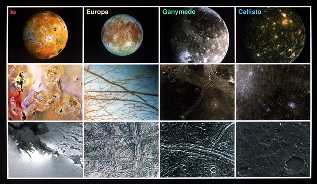
The Galilean satellites are the 4 major moons of Jupiter, Io, Europa, Ganymede, and Callisto. In this picture, Io, and Io’s surface, are shown on the left-most end, then Europa, and its surface, then Ganymede,
...more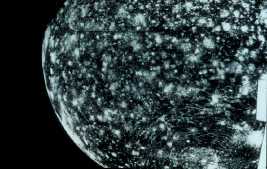
The surface of Callisto is deeply pockmarked with craters. It looks to be perhaps the most severely cratered body in the solar system. There are also very large craters to be found there. The severity
...more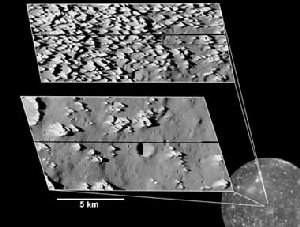
The Galileo spacecraft was only 86 miles (138 km) above the surface of Callisto when it took the pictures to the left. These are the highest resolution views ever seen of any of Jupiter's moons. You can
...more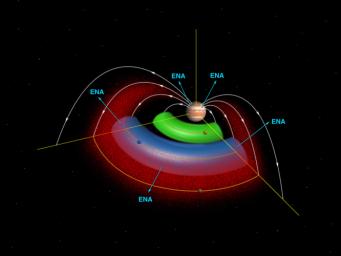
The Galileo mission discovered something amazing! Europa has its own atmosphere, although it is very, very thin. This atmosphere is created when fast moving molecules in Jupiter's magnetosphere hit the
...more
The Galileo spacecraft was launched on October 19, 1989. Galileo had two parts: an orbiter and a descent probe that parachuted into Jupiter's atmosphere. Galileo's main mission was to explore Jupiter and
...more
Amalthea was discovered by E Barnard in 1872. Of the 17 moons it is the 3rd closest to Jupiter, with a standoff distance of 181,300 km. Amalthea is about the size of a county or small state, and is just
...more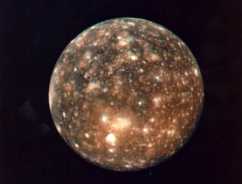
Callisto was first discovered by Galileo in 1610, making it one of the Galilean Satellites. Of the 60 moons it is the 8th closest to Jupiter, with a standoff distance of 1,070,000 km. It is the 2nd largest
...more














